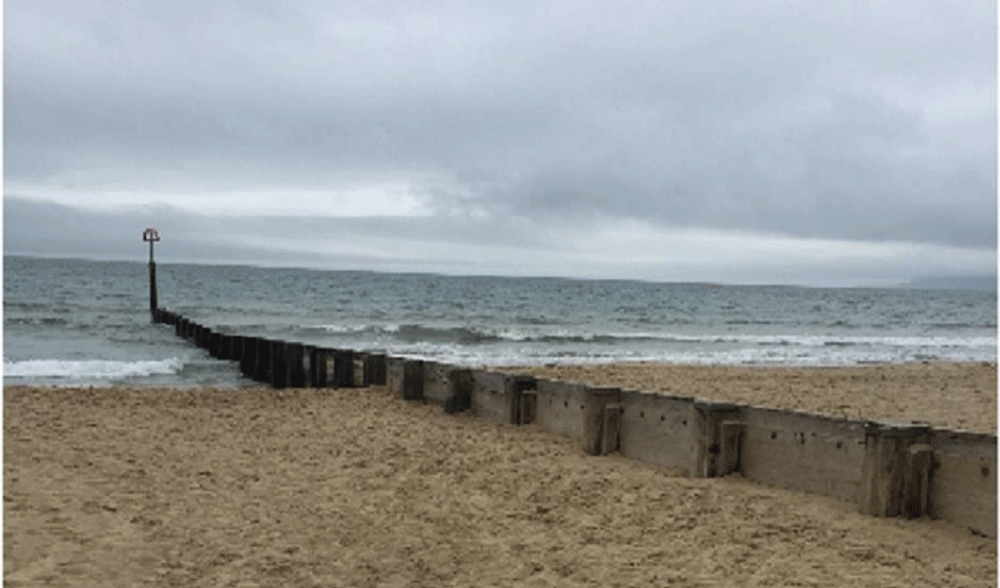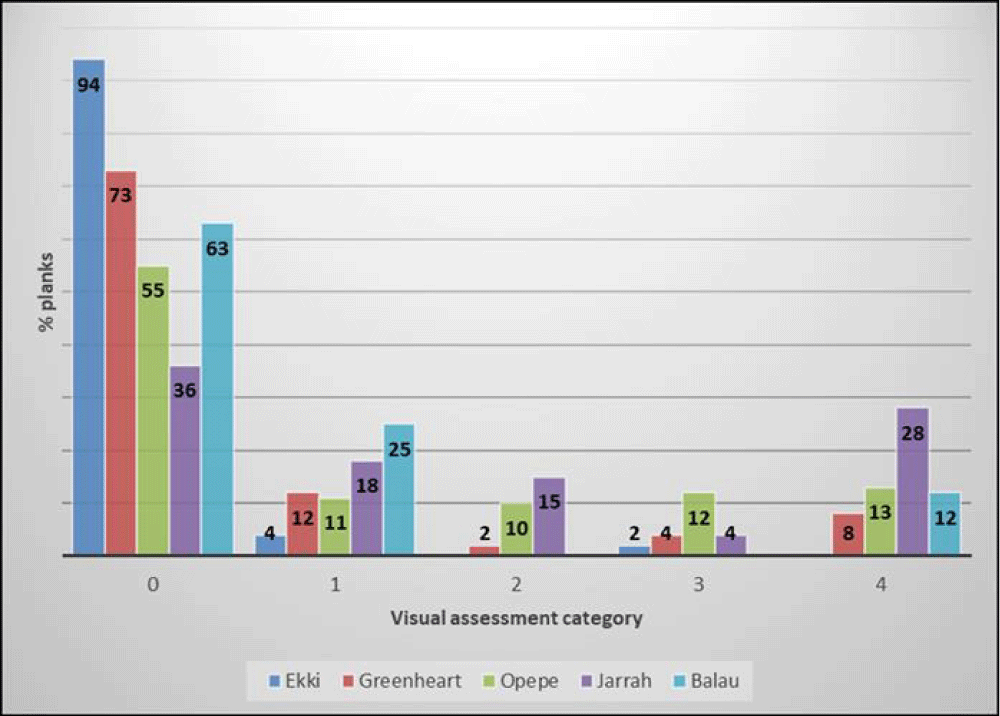Annals of Marine Science
Evaluating the potential for re-using timber from deconstructed sea defence groynes from the Bournemouth groyne field
John Williams1 and Dennis Jones2,3*
2Wood Science and Engineering, Luleå University of Technology, Skellefteå, Sweden
3Biotechnical Faculty, University of Ljubljana, Ljubljana, Slovenia
Cite this as
Williams J, Jones D (2024) Evaluating the potential for re-using timber from deconstructed sea defence groynes from the Bournemouth groyne field. Ann Mar Sci 8(1): 011-013. DOI: https://dx.doi.org/10.17352/ams.000044Copyright License
© 2024 Williams J, et al. This is an open-access article distributed under the terms of the Creative Commons Attribution License, which permits unrestricted use, distribution, and reproduction in any medium, provided the original author and source are credited.Groynes have been part of the coastal appearance for centuries, helping prevent coastal erosion resulting from the littoral drift of material with prevailing sea currents. Whilst the use of rock groynes increased during the late 20th Century, the use of timber still remains the material of choice. Their performance depends upon the timber species used, and often sections are suitable for re-use. Assessment of the replacement of groyne fields in Bournemouth, United Kingdom appears to show the suitability of certain species to be re-used. Results indicated that ekki was the most suitable species for re-use, closely followed by greenheart.
Introduction
In the shadow of a looming climate crisis, the construction industry is evolving. The need for implementing sustainable practices has never been greater and the potential role of the circular economy is front and centre [1]. It can play a pivotal role in transforming the industry by promoting sustainable practices which emphasise the need to reduce the consumption of natural resources. Demand for timber as part of the net zero programme is expected to increase considerably, with some suggestions there could be a four-fold increase in demand by 2050 [2]. This increase in demand can significantly impact the supply of many timber species and in particular tropical hardwood species. This could lead to the limited availability of mature timber for projects where natural durability is an essential criterion. Re-using timber in construction is one area where natural resources can be conserved and ecological footprints are reduced in size [3].
This paper summarises research undertaken on the Bournemouth groyne field in the United Kingdom during the period 2015 to 2020 and demonstrates how adapting construction practices can yield substantial timber recovery rates from deconstructed sea defence groynes.
Sea groynes
Timber sea defence groynes are, traditionally, long, narrow structures built approximately perpendicular to the shoreline. Alternative systems based on wider rock defences or concrete have been used since the mid-20th Century, though the use of timber systems offers a renewable resource that may offer lower whole-life costs and environmental benefits [4]. Regardless of construction material, groynes act to prevent coastal erosion and protect against flooding. Typically, they are grouped together to form groyne systems or fields. An example of such a field is shown in Figure 1.
Timber has been the material of choice for use in marine and freshwater construction for centuries [5] and this is a reflection of the properties that make it an attractive choice of construction material which include:
- High strength-to-weight ratio
- High density
- Good workability
- Good durability to attack by decay-causing fungi
- Resistance to attack by marine borers
- High tolerance to short-duration loads
- Resistance to abrasion.
When a timber groyne is replaced there is an opportunity to re-use some of the timber from the deconstructed groynes on replacement groynes and timber that is not re-usable can be re-purposed. However, if timber is to be re-used then a careful assessment of its performance is necessary and a few key considerations need to be evaluated such as:
- Can the timber be re-used with minimum re-working?
- Can the timber be re-machined to yield smaller section sizes: creating planks out of piles?
- If the timber is to be re-machined can the metal fixings be removed?
- Is there a need to re-grade the timber for strength?
Between 1985 and 1987, five of the groynes at Bournemouth were built as experimental groynes where the performance of five different timber species was put to the test as planking. Groyne planks had cross-section dimensions of 100 x 300 mm. Greenheart was still used for piling. Table 1 describes these groynes.
As part of a groyne renewal programme that commenced in 2015, these groynes were deconstructed so that the performance of each species could be evaluated and an assessment made regarding the potential re-use of the timber with any guidance developed from the potential re-use of the timber could contribute to significant savings in capital expenditure on future coastal defence schemes [6].
The number of planks removed from groyne Nos. 31, 32, 33, 34, and 35 varied which meant that the total plank population for each species varied. The data in Figure 2 summarises the % number of planks by species (Y axis) that were assigned to a visual assessment category on the basis of their resistance. The visual assessment was a modification of the rating system used in the European standard EN 252 for assessing the amount of decay caused by microorganisms on test stakes [7], with the modified assessment shown in Table 2, focussing on the level of deterioration by gribble (Limnoria quadripunctata), a known wood boring species in the south of England [8]. An additional assessment criteria based on the degree of mechanical damage and/or abrasion is also accounted for. Shipworm (Teredo spp.) was not considered because a shipworm attack has not been observed in the Bournemouth groyne field.
Those classified as ‘0’ or 1’ were in good condition and could be re-used as groyne planks whereas high scores restricted or prevented re-use as planks. The field data was not sensitive enough to differentiate the planks by their location on the groynes and their position relative to the beach profile. Moreover, it is not possible to identify replacement planks and this may have an effect on interpreting the data.
During the assessment of the groyne planks, the presence of greenheart on groyne Nos. 32, 33, and 35 indicated that planks of opepe, jarrah, and balau have been replaced over the life of the groynes. Ekki was the best-performing timber species. Opepe appeared to offer slightly better field performance than jarrah. The comparatively high % of jarrah planks in category ‘4’ suggests that it is the least resistant to abrasion in service when compared to ekki and greenheart. Balau and opepe delivered adequate performance.
The data obtained from our assessment of timber from deconstructed groynes indicated that the five species used as groyne planking performed differently. The absence of detailed maintenance records prevented a detailed assessment as the age of individual planks, particularly greenheart planks, could not be confirmed. Furthermore, we are unable to identify which planks on which groynes have been replaced and when they were replaced. This lack of detail does not allow a precise assessment to be made of the performance of individual species during the service life of the experimental groynes. However, the data in Figure 2 allows conclusions to be drawn based on trend analysis and observational evidence.
These observations indicate that the species were suitable for use groynes as all had provided an adequate service life of varying success. Exposure in service over approximately 30 years highlighted differences in performance as shown in Figure 2. The data clearly show that the best-performing species was ekki followed by greenheart.
The re-cutting and re-use of timbers recovered from time-expired groynes offer the opportunity to secure an additional period of service life, as specified in other areas of deconstruction and reuses of timber [9], particularly in this study for ekki. However, a substantial reduction of cross-sectional dimensions could limit re-use in the original groyne field but could offer a valuable resource for other uses, particularly in coastal regions, where issues such as sand erosion can affect the service lives of less abrasion-resistant timber species and where reduced cross-section sizes could be tolerated.
Conclusion
The data showed that ekki was the best-performing timber species for timber groyne construction at Bournemouth.
Selecting a revised plank cross-section of 90 x 290 mm had the potential to yield 94% recovery of the ekki for re-use as groyne planking on new groynes. A lower yield of 73% was possible for greenheart when evaluating the potential recovery of planks with a cross-section of 90 x 290 mm. A higher yield would be achieved if a shallower board depth of 250 mm is selected. However, the advantages of recovering a higher volume of timber would need to be offset by the requirement of additional fixings and consequent additional construction time. The re-use of material for new groynes places less stress on natural forest resources and reduces demand on a finite resource.
Bournemouth has a narrow tidal range so an increase in construction time would possibly have a greater detrimental effect on construction costs than any savings enjoyed by recovering timber planks with a reduced cross-section of 90 x 250 mm.
- Lima L, Trindade E, Alencar L, Alencar M, Silva L. Sustainability in the construction industry: A systematic review of the literature. J Clean Prod. 2021; 289:125730.
- Mitchell J. Net zero could drive up the global demand for timber, putting at risk the world’s forests. 2022.
- Ghobadi M, Sepasgozar SME. Circular economy strategies in modern timber construction as a potential response to climate change. J Build Eng. 2023; 77:107229.
- Crossman M, Simm J. Sustainable coastal defences – the use of timber and other materials. Mun Engineer. 2002; 151(3):207-211.
- Meaden M, Williams J, Simm J. Alternative hardwood timbers for use in marine and freshwater construction. Environment Agency, Bristol, United Kingdom; 2011.
- Williams J, Blanchard I. Comparison of the performance of lesser used species (LUS) at Bournemouth against previous laboratory-based research. Bournemouth Borough Council, Report No. 1280825-02 (0); 2018.
- CEN (2014). EN 252: 2014. Field test method for determining the relative protective effectiveness of a wood preservative in ground contact. European Committee for Standardization, Brussels, Belgium.
- Borges LMS, Merckelbach LM, Cragg SM. Biogeography of wood-boring crustaceans (Isopoda: Limnoriidae) established in European coastal waters. PLoS One. 2014; 9(10). e109593.w
- Cristescu C, Honfi D, Sandberg K, Sandin Y, Shotton E, Walsh S, Ridley-Ellis D, Riise M, Ivanica R, Harte A, Uí Chúláin C, De Arana-Fernández M, Llana DF, Íñiguez-González G, Barbero MG, Nasiri B, Hughes M, Krofl Ž. Design for deconstruction and reuse of timber structures – state of the art review. InFutUReWood report 1; 2020.

Article Alerts
Subscribe to our articles alerts and stay tuned.
 This work is licensed under a Creative Commons Attribution 4.0 International License.
This work is licensed under a Creative Commons Attribution 4.0 International License.



 Save to Mendeley
Save to Mendeley
